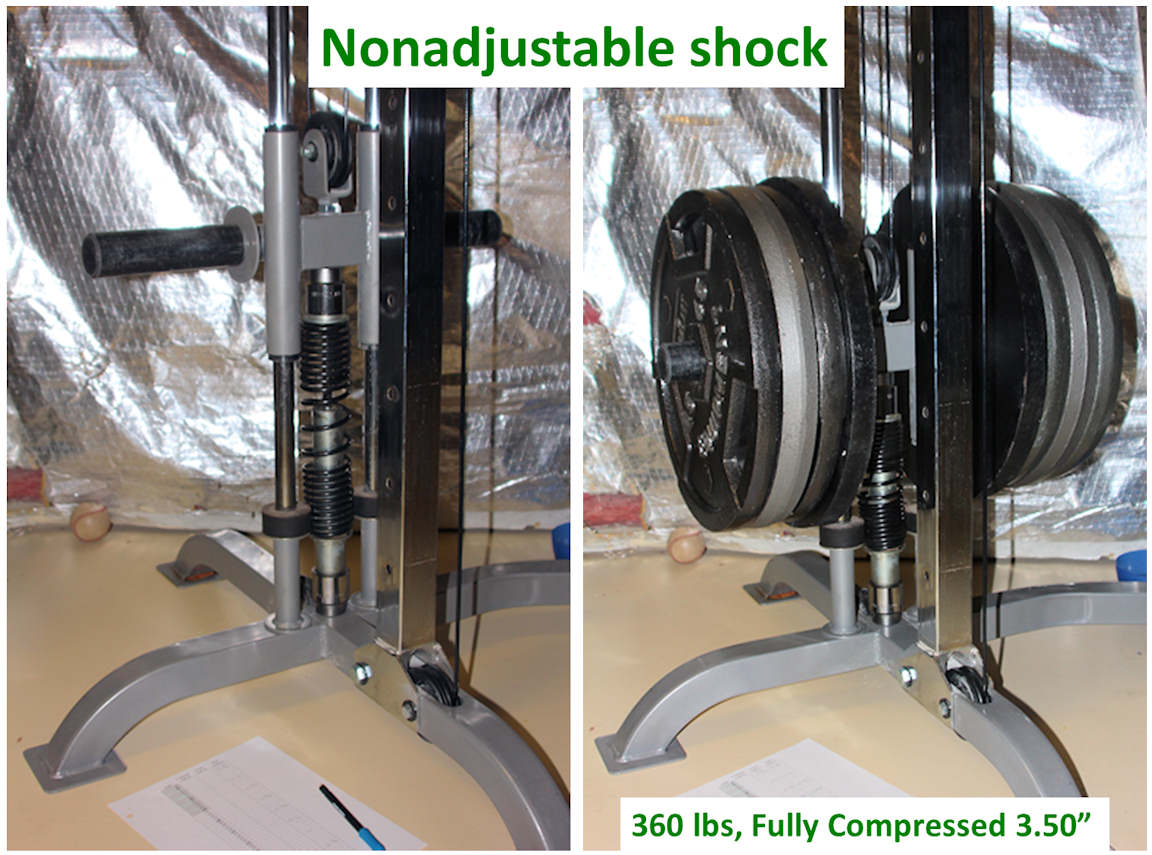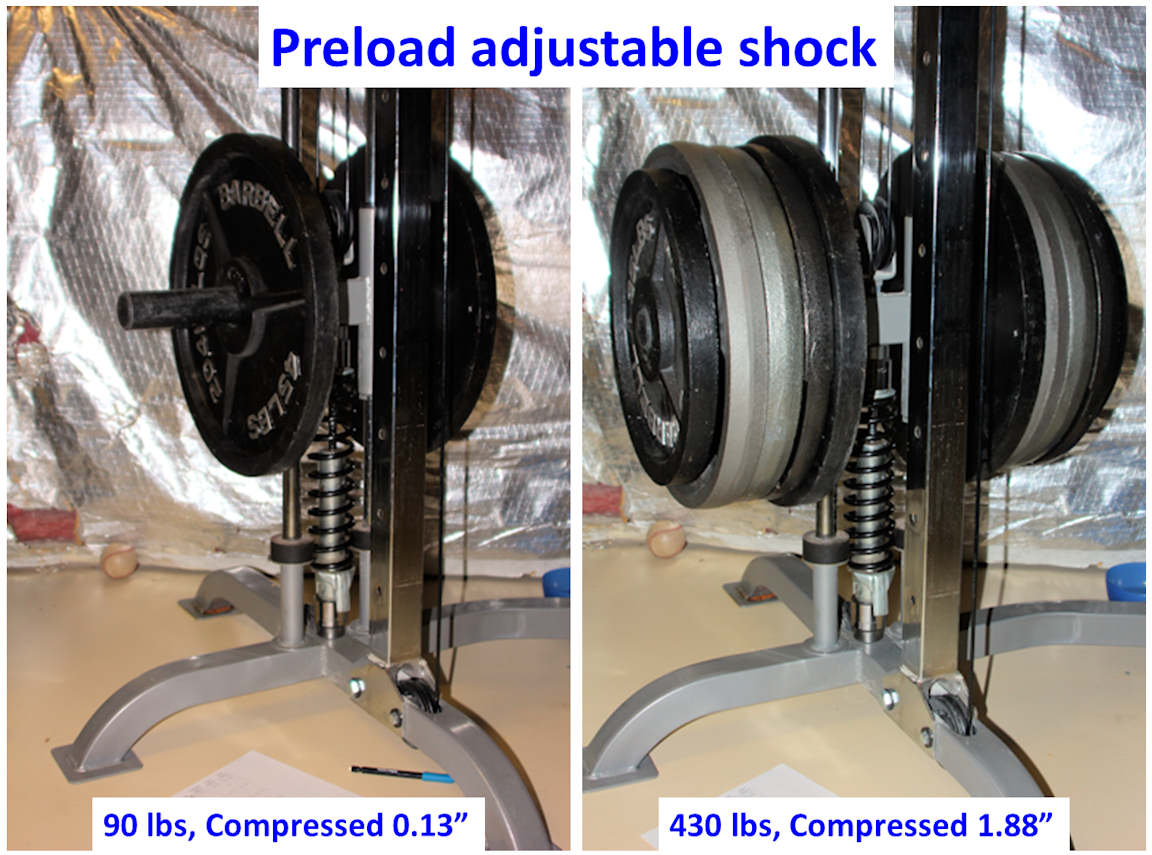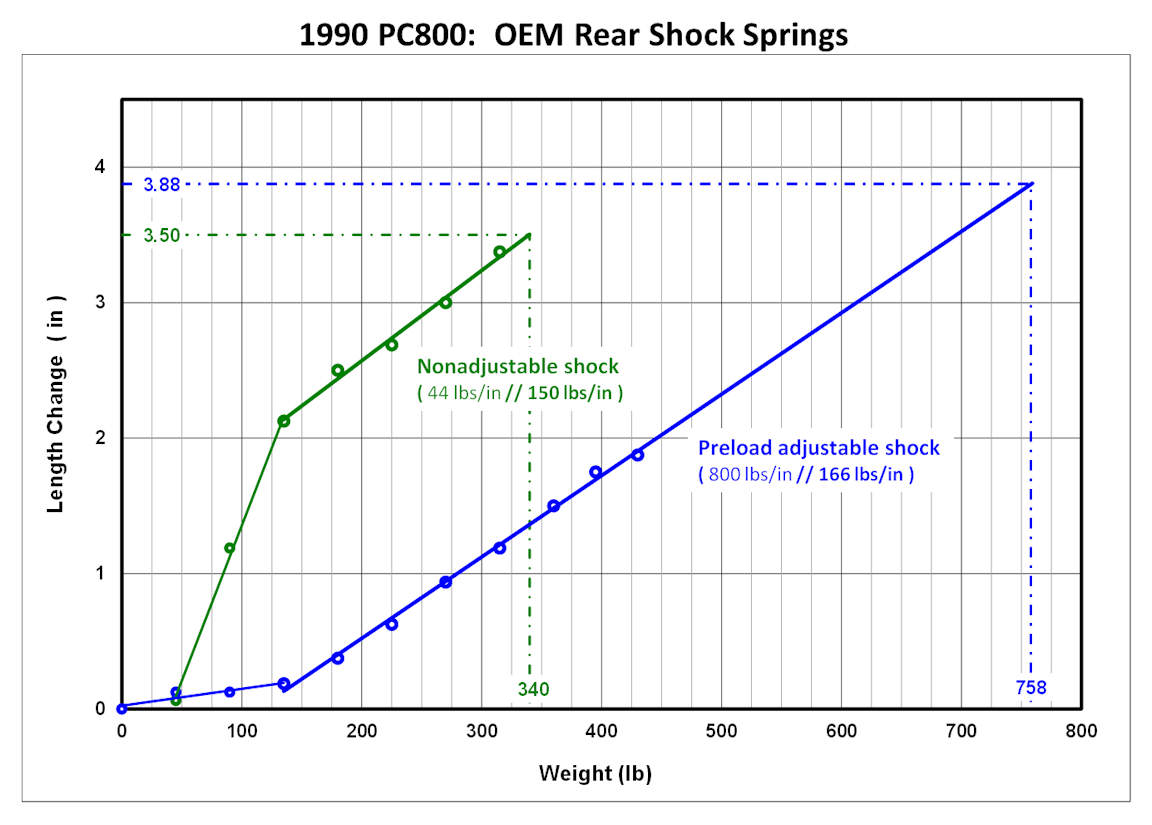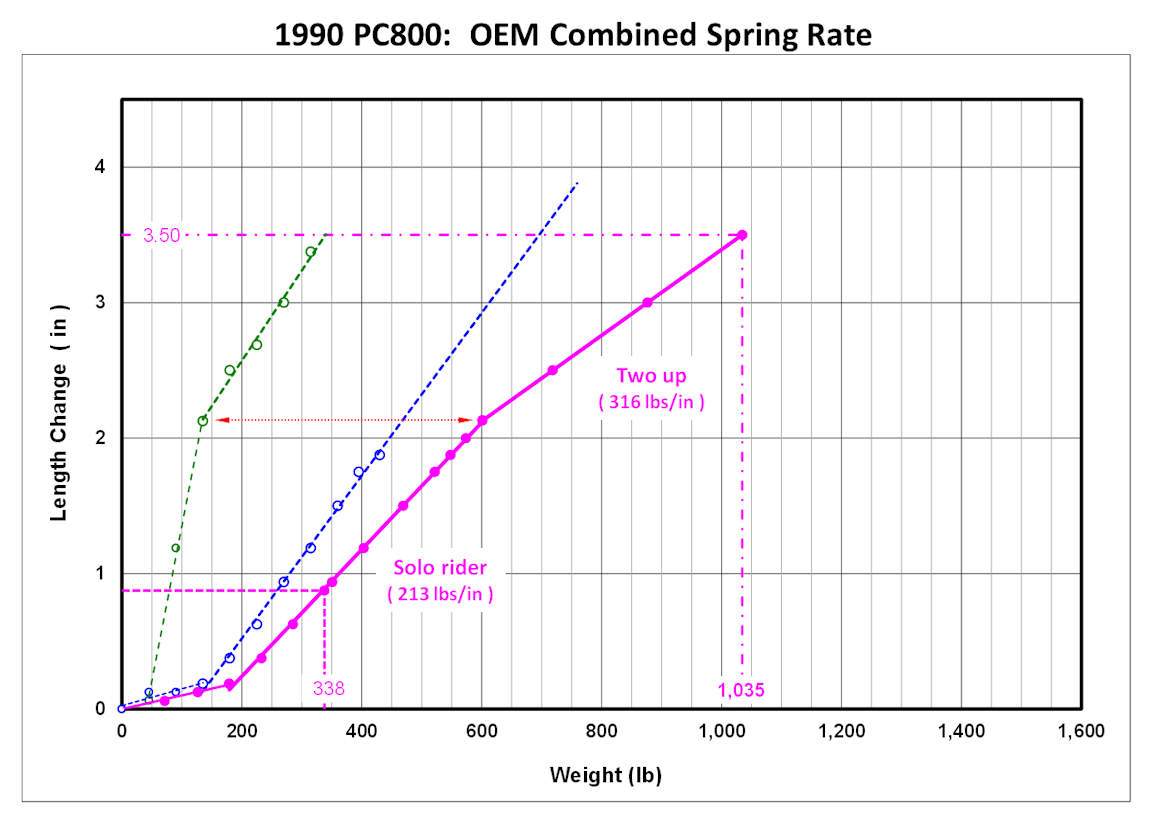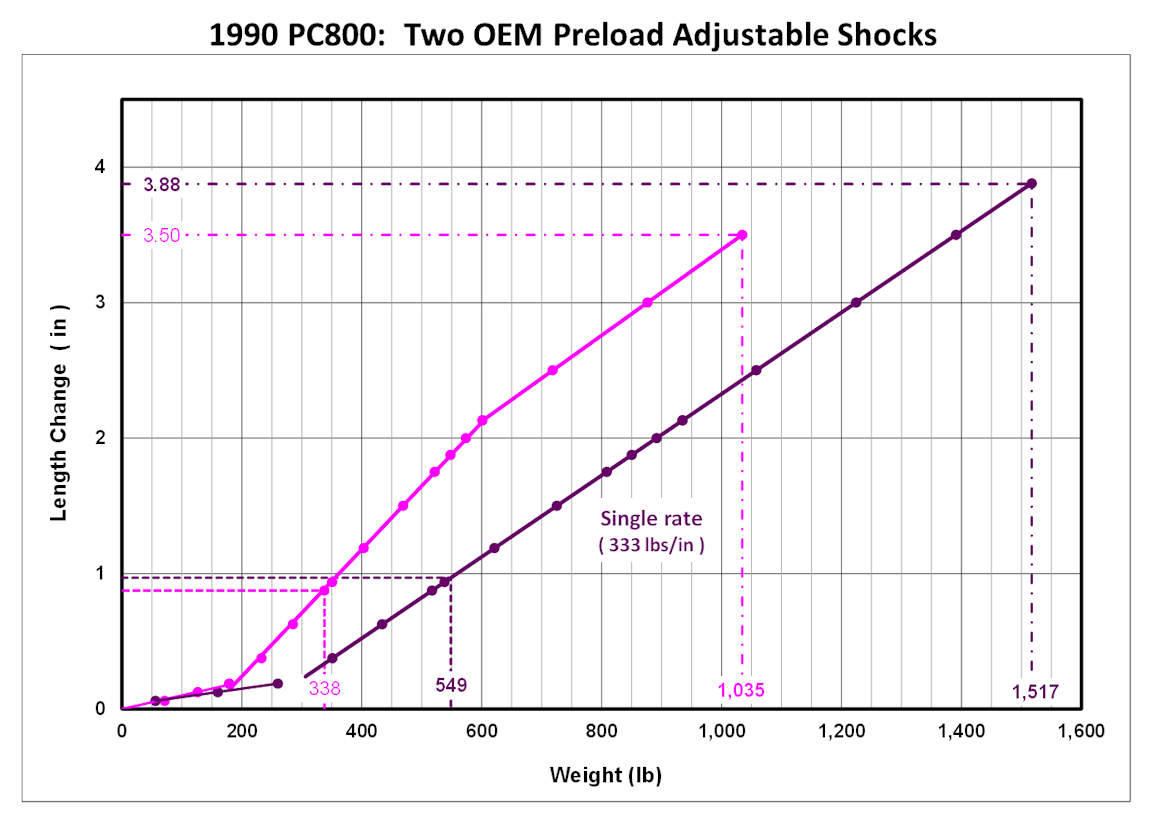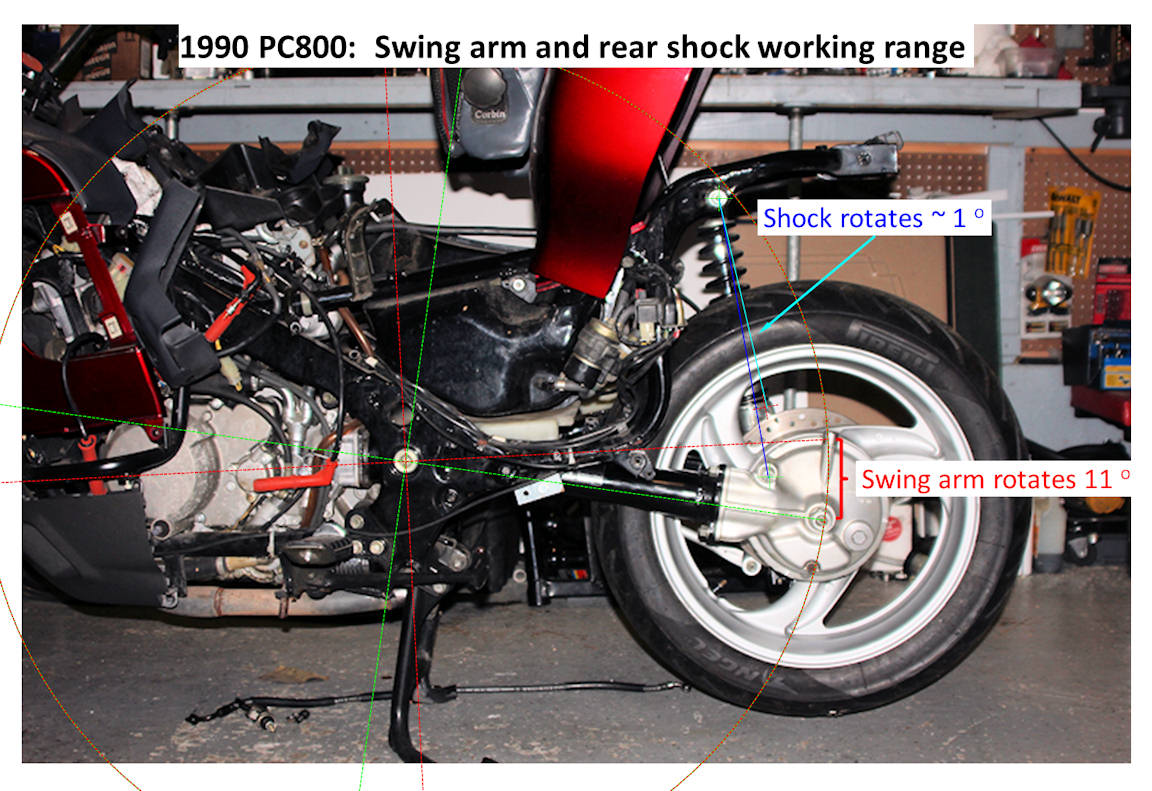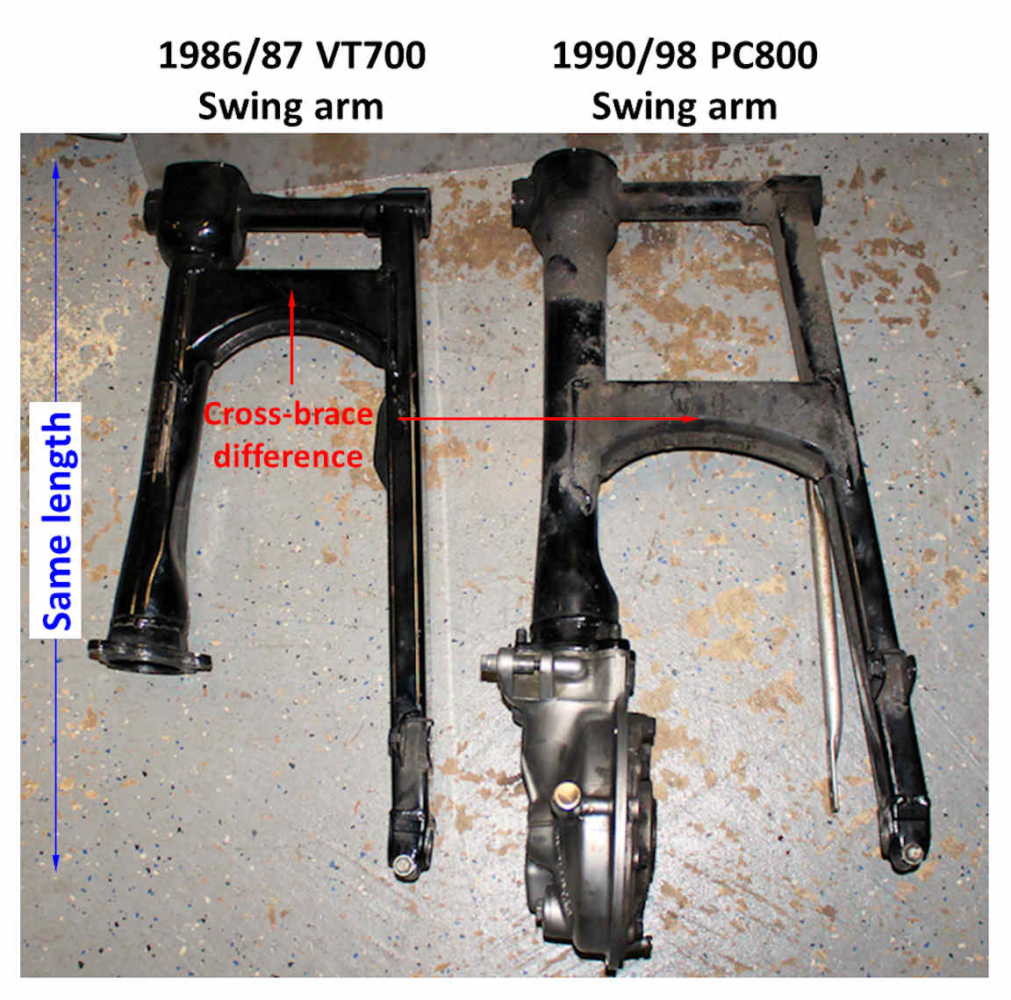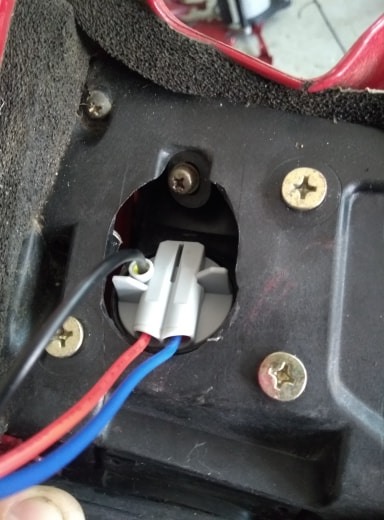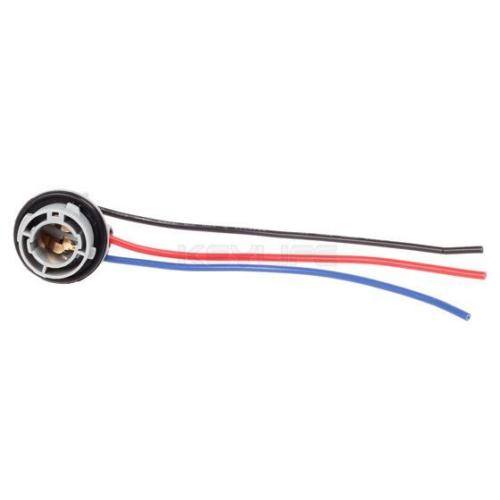Here are the relevant installation instructions for installing a Hondaline backrest (P/N: 08111-MR500) for a passenger on a Honda Pacific Coast. This comes from Leland Sheppard’s archive of PC800 Honda Pacific Coast motorcycle information. After Leland’s passing, I have been curating all of the knowledge he left our wonderful little motorcycle community. Below are Leland’s words:
The following two images are the American Honda Motor Co. installation instructions for the PC800 passenger backrest, copyright American Honda Motor Co, Inc., 1988. Some Installation suggestions from frustrated installers follow the images…
Page 1:
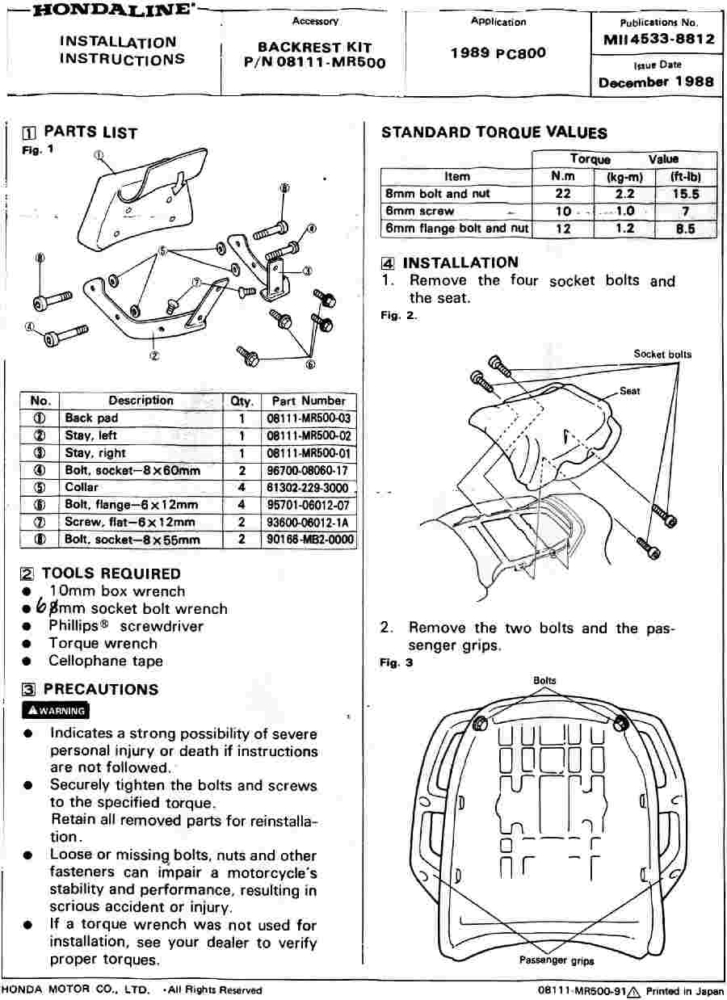
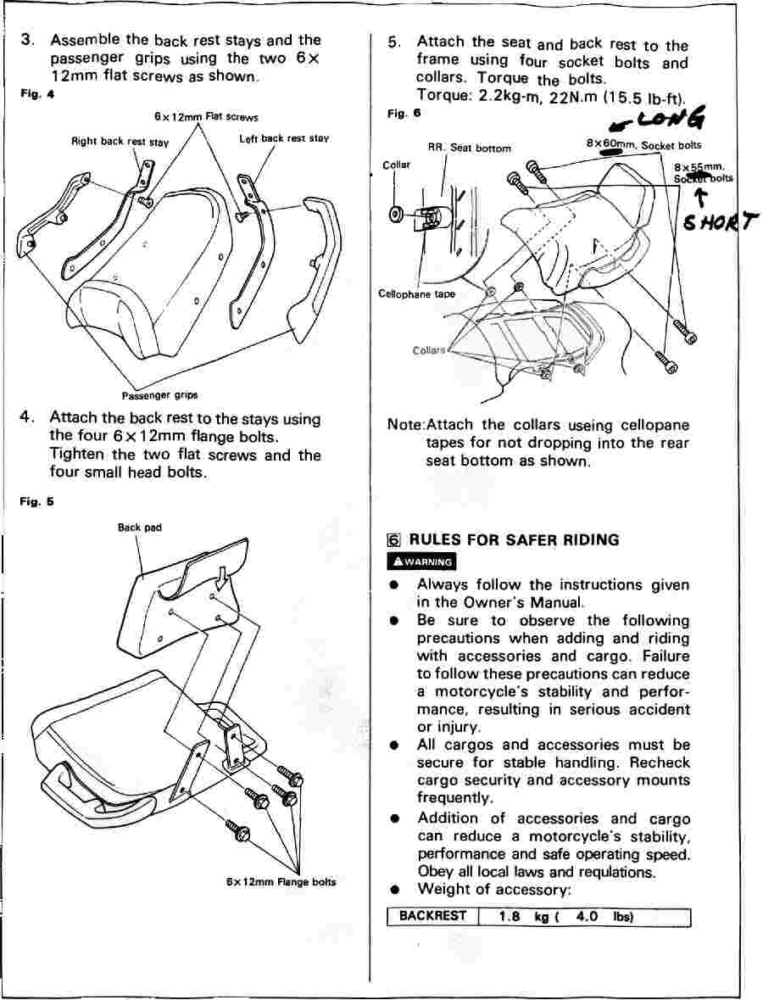
Installation Notes:
Alex Vrenios offered the following tips:
Although the two bolts one must remove to detach the hand rails (Fig. 2) go through the seat, the two flat-head screws one uses to
reattach the hand rails DO NOT go through the seat! (Their heads are too small for the seat holes anyway!) These two screws go into the seat brackets (into the counter-sunk holes drilled for that purpose) as shown in Fig. 4, which should be obvious. (But not to me!) [It wasn’t obvious to me either and I didn’t get the flathead screws with mine; instead I struggled to get the original bolts to fit and finally went to the hardware store and bought longer ones for one of the two backrests I’ve installed. Leland]
Alex continues:
I mistakenly assumed that the screws were supposed to go through the holes in the seat, then through the bracket holes and into the hand rails. I cannot tell you how disturbing it was to find longer 6mm screws at Home Depot, only to discover that this arrangement was nearly impossible to remount on the bike. A closer look at the instructions (yes, I read them first, but not carefully enough it seems) revealed the true mounting technique. Everything went together pretty smoothly after I made that change.
Another “trick” I found helpful:
The instructions say you should use tape to hold the four short collars, extensions to the metal tubes that the four seat bolts go hrough. I found this was not a satisfactory way to hold them in place while applying the grip of Hercules on the hand rails to get all four bolts in. What I did was to put a short collar on a tube, wrap it with one and a quarter turns of electrical tape, using dots of super glue to secure the tape end. I then put these lengthened tubes into the seat, and ran the bolts through them. I still had one come apart, but it was a LOT easier than what they suggested, in my opinion…

